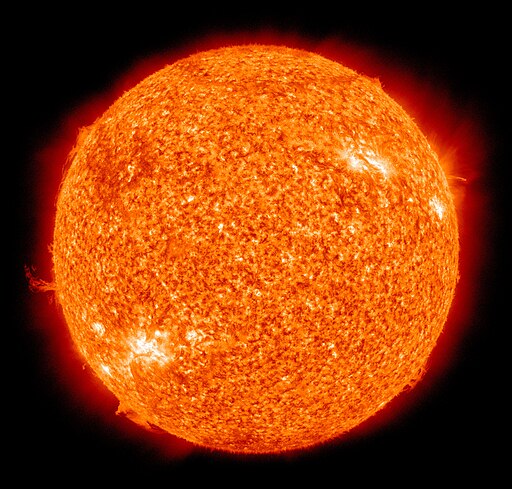2.2: Scientific Notation
- Page ID
- 289337
\( \newcommand{\vecs}[1]{\overset { \scriptstyle \rightharpoonup} {\mathbf{#1}} } \)
\( \newcommand{\vecd}[1]{\overset{-\!-\!\rightharpoonup}{\vphantom{a}\smash {#1}}} \)
\( \newcommand{\dsum}{\displaystyle\sum\limits} \)
\( \newcommand{\dint}{\displaystyle\int\limits} \)
\( \newcommand{\dlim}{\displaystyle\lim\limits} \)
\( \newcommand{\id}{\mathrm{id}}\) \( \newcommand{\Span}{\mathrm{span}}\)
( \newcommand{\kernel}{\mathrm{null}\,}\) \( \newcommand{\range}{\mathrm{range}\,}\)
\( \newcommand{\RealPart}{\mathrm{Re}}\) \( \newcommand{\ImaginaryPart}{\mathrm{Im}}\)
\( \newcommand{\Argument}{\mathrm{Arg}}\) \( \newcommand{\norm}[1]{\| #1 \|}\)
\( \newcommand{\inner}[2]{\langle #1, #2 \rangle}\)
\( \newcommand{\Span}{\mathrm{span}}\)
\( \newcommand{\id}{\mathrm{id}}\)
\( \newcommand{\Span}{\mathrm{span}}\)
\( \newcommand{\kernel}{\mathrm{null}\,}\)
\( \newcommand{\range}{\mathrm{range}\,}\)
\( \newcommand{\RealPart}{\mathrm{Re}}\)
\( \newcommand{\ImaginaryPart}{\mathrm{Im}}\)
\( \newcommand{\Argument}{\mathrm{Arg}}\)
\( \newcommand{\norm}[1]{\| #1 \|}\)
\( \newcommand{\inner}[2]{\langle #1, #2 \rangle}\)
\( \newcommand{\Span}{\mathrm{span}}\) \( \newcommand{\AA}{\unicode[.8,0]{x212B}}\)
\( \newcommand{\vectorA}[1]{\vec{#1}} % arrow\)
\( \newcommand{\vectorAt}[1]{\vec{\text{#1}}} % arrow\)
\( \newcommand{\vectorB}[1]{\overset { \scriptstyle \rightharpoonup} {\mathbf{#1}} } \)
\( \newcommand{\vectorC}[1]{\textbf{#1}} \)
\( \newcommand{\vectorD}[1]{\overrightarrow{#1}} \)
\( \newcommand{\vectorDt}[1]{\overrightarrow{\text{#1}}} \)
\( \newcommand{\vectE}[1]{\overset{-\!-\!\rightharpoonup}{\vphantom{a}\smash{\mathbf {#1}}}} \)
\( \newcommand{\vecs}[1]{\overset { \scriptstyle \rightharpoonup} {\mathbf{#1}} } \)
\( \newcommand{\vecd}[1]{\overset{-\!-\!\rightharpoonup}{\vphantom{a}\smash {#1}}} \)
\(\newcommand{\avec}{\mathbf a}\) \(\newcommand{\bvec}{\mathbf b}\) \(\newcommand{\cvec}{\mathbf c}\) \(\newcommand{\dvec}{\mathbf d}\) \(\newcommand{\dtil}{\widetilde{\mathbf d}}\) \(\newcommand{\evec}{\mathbf e}\) \(\newcommand{\fvec}{\mathbf f}\) \(\newcommand{\nvec}{\mathbf n}\) \(\newcommand{\pvec}{\mathbf p}\) \(\newcommand{\qvec}{\mathbf q}\) \(\newcommand{\svec}{\mathbf s}\) \(\newcommand{\tvec}{\mathbf t}\) \(\newcommand{\uvec}{\mathbf u}\) \(\newcommand{\vvec}{\mathbf v}\) \(\newcommand{\wvec}{\mathbf w}\) \(\newcommand{\xvec}{\mathbf x}\) \(\newcommand{\yvec}{\mathbf y}\) \(\newcommand{\zvec}{\mathbf z}\) \(\newcommand{\rvec}{\mathbf r}\) \(\newcommand{\mvec}{\mathbf m}\) \(\newcommand{\zerovec}{\mathbf 0}\) \(\newcommand{\onevec}{\mathbf 1}\) \(\newcommand{\real}{\mathbb R}\) \(\newcommand{\twovec}[2]{\left[\begin{array}{r}#1 \\ #2 \end{array}\right]}\) \(\newcommand{\ctwovec}[2]{\left[\begin{array}{c}#1 \\ #2 \end{array}\right]}\) \(\newcommand{\threevec}[3]{\left[\begin{array}{r}#1 \\ #2 \\ #3 \end{array}\right]}\) \(\newcommand{\cthreevec}[3]{\left[\begin{array}{c}#1 \\ #2 \\ #3 \end{array}\right]}\) \(\newcommand{\fourvec}[4]{\left[\begin{array}{r}#1 \\ #2 \\ #3 \\ #4 \end{array}\right]}\) \(\newcommand{\cfourvec}[4]{\left[\begin{array}{c}#1 \\ #2 \\ #3 \\ #4 \end{array}\right]}\) \(\newcommand{\fivevec}[5]{\left[\begin{array}{r}#1 \\ #2 \\ #3 \\ #4 \\ #5 \\ \end{array}\right]}\) \(\newcommand{\cfivevec}[5]{\left[\begin{array}{c}#1 \\ #2 \\ #3 \\ #4 \\ #5 \\ \end{array}\right]}\) \(\newcommand{\mattwo}[4]{\left[\begin{array}{rr}#1 \amp #2 \\ #3 \amp #4 \\ \end{array}\right]}\) \(\newcommand{\laspan}[1]{\text{Span}\{#1\}}\) \(\newcommand{\bcal}{\cal B}\) \(\newcommand{\ccal}{\cal C}\) \(\newcommand{\scal}{\cal S}\) \(\newcommand{\wcal}{\cal W}\) \(\newcommand{\ecal}{\cal E}\) \(\newcommand{\coords}[2]{\left\{#1\right\}_{#2}}\) \(\newcommand{\gray}[1]{\color{gray}{#1}}\) \(\newcommand{\lgray}[1]{\color{lightgray}{#1}}\) \(\newcommand{\rank}{\operatorname{rank}}\) \(\newcommand{\row}{\text{Row}}\) \(\newcommand{\col}{\text{Col}}\) \(\renewcommand{\row}{\text{Row}}\) \(\newcommand{\nul}{\text{Nul}}\) \(\newcommand{\var}{\text{Var}}\) \(\newcommand{\corr}{\text{corr}}\) \(\newcommand{\len}[1]{\left|#1\right|}\) \(\newcommand{\bbar}{\overline{\bvec}}\) \(\newcommand{\bhat}{\widehat{\bvec}}\) \(\newcommand{\bperp}{\bvec^\perp}\) \(\newcommand{\xhat}{\widehat{\xvec}}\) \(\newcommand{\vhat}{\widehat{\vvec}}\) \(\newcommand{\uhat}{\widehat{\uvec}}\) \(\newcommand{\what}{\widehat{\wvec}}\) \(\newcommand{\Sighat}{\widehat{\Sigma}}\) \(\newcommand{\lt}{<}\) \(\newcommand{\gt}{>}\) \(\newcommand{\amp}{&}\) \(\definecolor{fillinmathshade}{gray}{0.9}\)Astronomers are accustomed to really big numbers. While the moon is only 406,697 km from earth at its maximum distance, the sun is much further away (150 million km). Proxima Centauri, the star nearest the earth, is 39,900,000,000,000 km away – and this is just the start of long distances. On the other end of the scale, some biologists deal with very small numbers: a typical fungus could be as small as 30 micrometers (0.000030 meters) in length and a virus might only be 0.03 micrometers (0.00000003 meters) long.

A system called scientific notation avoids much of the tedium and awkwardness of dealing with numbers that are very large or very small. Consider the numbers 1,000,000, 3,000,000, and 6,700,000:
| Number | Also | Meaning | Scientific Notation |
| 1,000,000 | 1 × 1,000,000 | \(1\times10\times10\times10\times10\times10\times10\) | 1 × 106 |
| 3,000,000 | 3 × 1,000,000 | \(3\times10\times10\times10\times10\times10\times10\) | 3 × 106 |
| 6,700,000 | 6.7 × 1,000,000 | \(6.7\times10\times10\times10\times10\times10\times10\) | 6.7 × 106 |
Likewise, consider the numbers 0.000001, 0.000003, and 0.0000067:
| Number | Also | Meaning | Scientific Notation |
| 0.000001 | \(\frac1{1,000,000}\) | \(\frac1{10\times10\times10\times10\times10\times10}\) | 1 × 10–6 |
| 0.000003 | \(\frac3{1,000,000}\) | \(\frac3{10\times10\times10\times10\times10\times10}\) | 3 × 10–6 |
| 0.0000067 | \(\frac{6.7}{1,000,000}\) | \(\frac{6.7}{10\times10\times10\times10\times10\times10}\) | 6.7 × 10–6 |
As we can see,
- Really large numbers have positive exponents.
- Really small numbers have negative exponents.
Therefore, you should identify 6.022 × 1023 atoms as a very large number of atoms and 9.11 × 10–31 kg as a very small mass.
In scientific notation, numbers are expressed in the form
\[ N \times 10^x\]
where \(N\) is greater than or equal to 1 and less than 10 (1 ≤ \(N\) < 10), and \(x\) is an integer value.
To convert a quantity to scientific notation, count the number of places required to move the decimal point to yield a number, \(N\), between 1 and 10. The exponent, \(x\), is equal to the number of places that the decimal was moved, and will be positive integer value if the quantity is large (>1) and negative integer value if the quantity is small (<1).
To convert a quantity from scientific notation to decimal notation (without scientific notation), move the decimal the number of places indicated by the exponent in the direction that makes either a really large number (when \(x\) is positive) or a really small number (when \(x\) is negative).
✅ Example \(\PageIndex{1}\)
If the given quantity is in decimal notation, convert it to scientific notation. If the given quantity is in scientific notation, convert it to decimal notation.
- 8.62 × 10–6
- 92,300,000
- 4.2 × 1010
- 0.000049
Solution
| Explanation | Answer | |
|---|---|---|
| A |
8.62 × 10–6 is a really small number since \(x\) is negative. Move the decimal 6 places to make a really small number. Fill in the spaces with zeros. \(8.62\times10^{-6}\;=\;0.\underset\smile0\underset\smile0\underset\smile0\underset\smile0\underset\smile0\underset\smile862\) |
0.00000862 |
| B |
92,300,000 is a really large number, so the exponent will be positive. Move the decimal 7 places to make a number between 1 and 10. \(92,300,000\) = \(9\underset\smile2,\underset\smile3\underset\smile0\underset\smile0,\underset\smile0\underset\smile0\underset\smile0\) |
9.23 × 107 |
| C |
4.2 × 1010 is a really large number since \(x\) is positive. Move the decimal 10 places to make a really large number. Fill in the spaces with zeros. \(4.2\times10^{10}\) = \(4\underset\smile2,\underset\smile0\underset\smile0\underset\smile0,\underset\smile0\underset\smile0\underset\smile0,\underset\smile0\underset\smile0\underset\smile0\) |
42,000,000,000 |
| D |
0.000049 is a really small number, so the exponent will be negative. Move the decimal 5 places to make a number between 1 and 10. \(0.000049\) = \(0.\underset\smile0\underset\smile0\underset\smile0\underset\smile0\underset\smile49\) |
4.9 × 10–5 |
✏️ Exercise \(\PageIndex{1}\)
If the given quantity is in decimal notation, convert it to scientific notation. If the given quantity is in scientific notation, convert it to decimal notation.
- 0.00505
- 1.7 × 10–8
- 3.33 × 105
- 860,000,000,000
- Answer A
- 5.05 × 10–3
- Answer B
- 0.000000017
- Answer C
- 333,000
- Answer D
- 8.6 × 1011
This page is shared under a CK-12 license and was authored, remixed, and/or curated by Lance S. Lund (Anoka-Ramsey Community College), Melissa Alviar-Agnew, and Henry Agnew. Original source: https://www.ck12.org/c/chemistry/.



